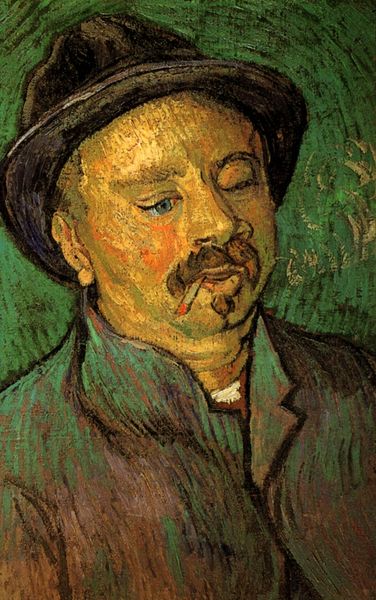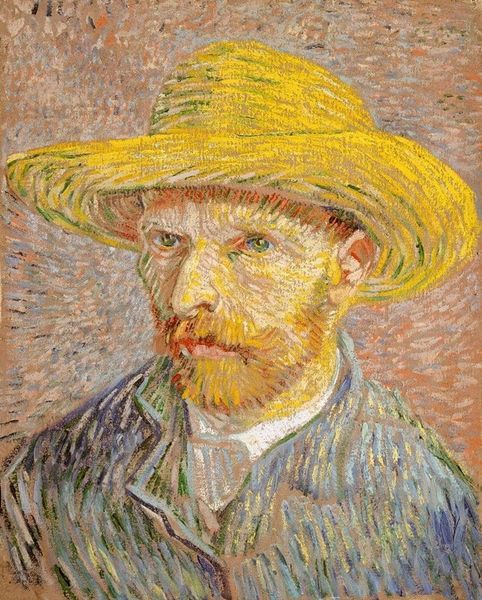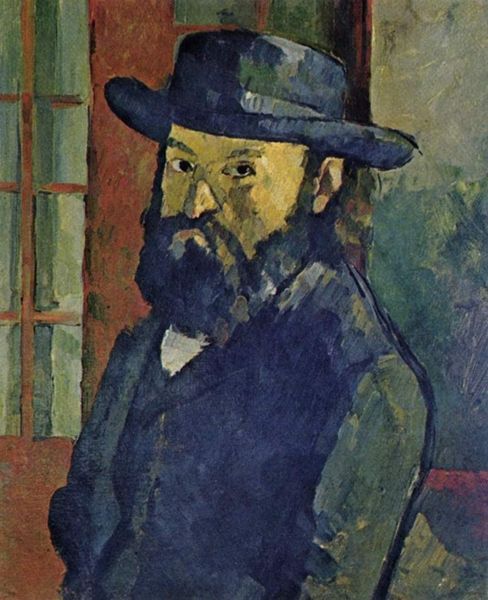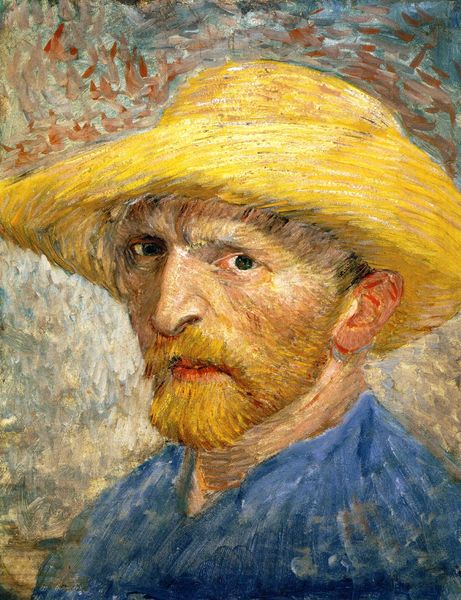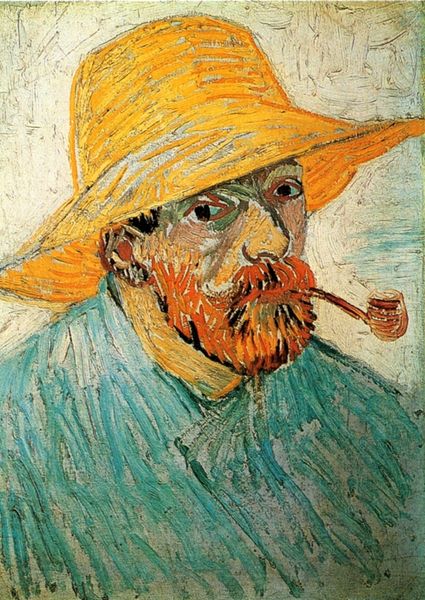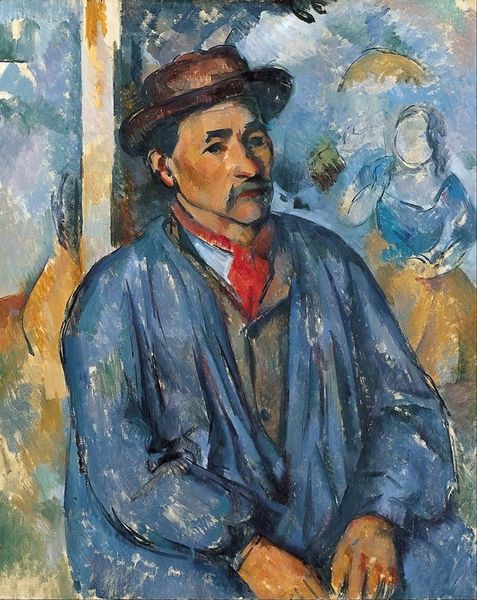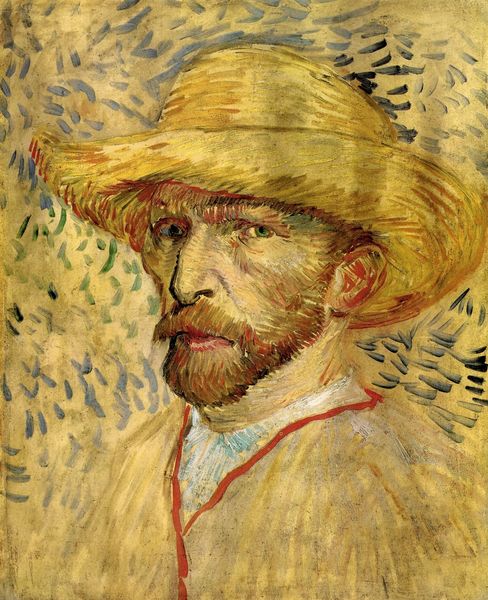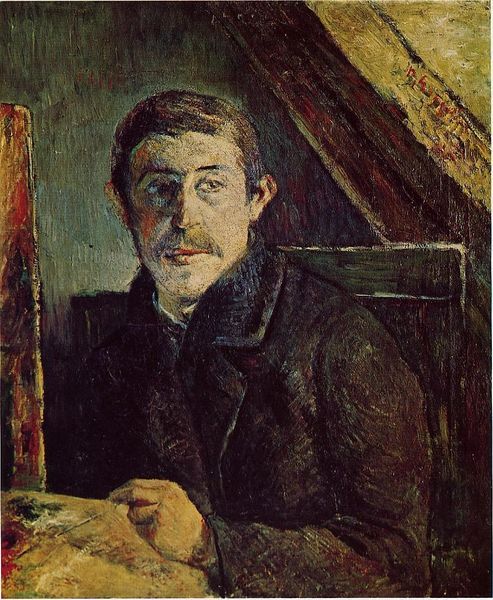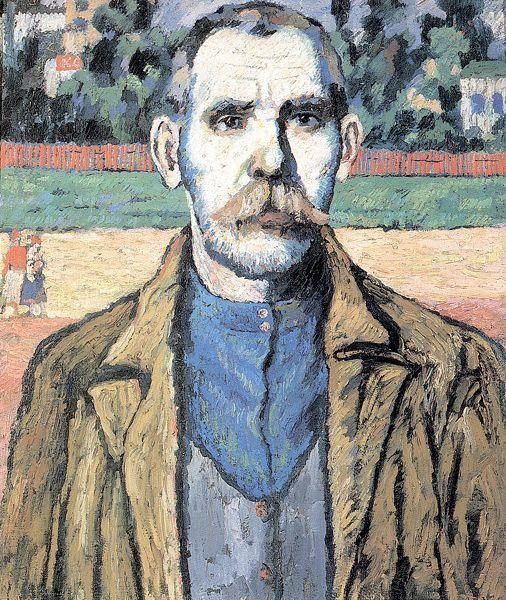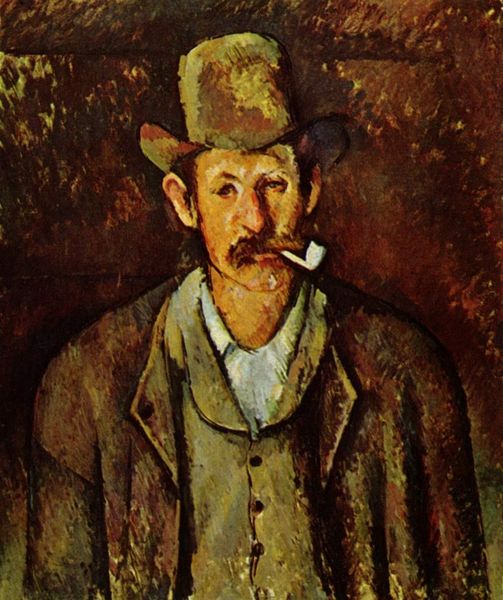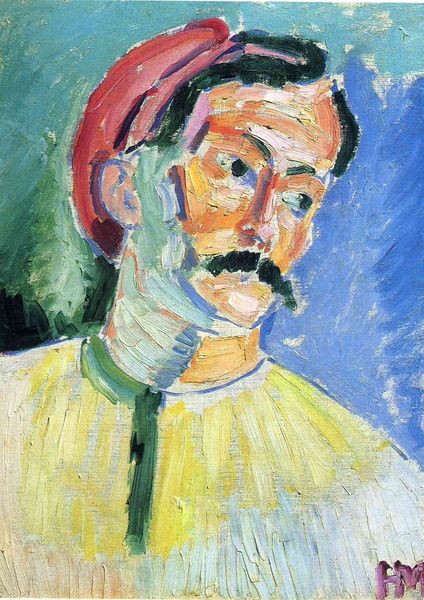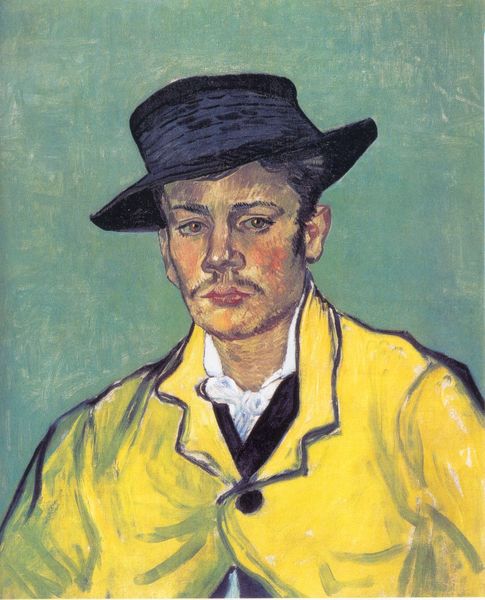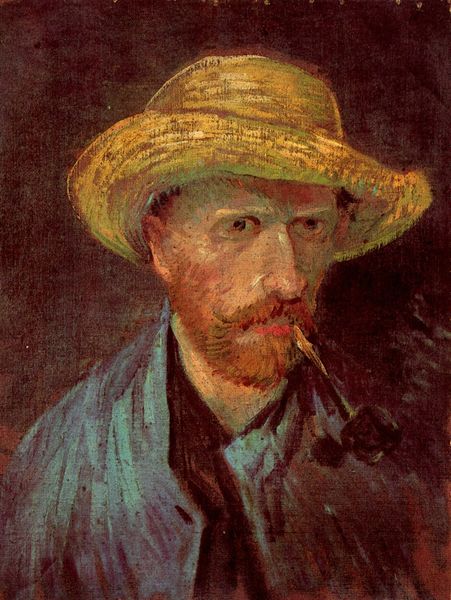
painting, oil-paint
#
portrait
#
painting
#
oil-paint
#
oil painting
#
post-impressionism
Copyright: Public domain
Editor: Here we have Van Gogh's "The Smoker (Peasant)" from 1888, rendered in oil on canvas. It feels so raw, immediate somehow… There's an honesty in his gaze, but also a hint of melancholy. What catches your eye in this piece? Curator: You know, it’s funny, I often wonder if he was capturing something of himself in these working-class portraits. Look at the vibrant, almost clashing, brushstrokes. See how that electric blue background throws the peasant’s face into high relief? It’s like Van Gogh is deliberately using visual tension to mirror an internal one. What do you make of the peasant’s pipe, seemingly wedged so firmly in his mouth? Editor: It does seem rather… forced. Maybe it’s meant to convey a reliance, an escape? I mean, this isn’t some idealized depiction of rural life. It's pretty stark, almost confrontational. Curator: Exactly! There's no romanticizing poverty here, is there? That pipe could be read as a symbol of simple pleasure, or even a grim coping mechanism. Van Gogh does this thing where he layers his emotional world onto these unassuming faces… Have you noticed how the figure's coloring anticipates Fauvism? Editor: Wow, I hadn’t really considered that, but I see what you mean with the bright reds in his cheeks! This piece has definitely given me a fresh appreciation for Van Gogh’s willingness to confront reality head-on. Curator: Me too. It's easy to get lost in the swirling colors and iconic imagery, but at its heart, this is an intensely human story—a painted poem of sorts. A visual wrestling match between acceptance and frustration, perhaps. It also demonstrates, visually, a very creative artistic premonition of an emerging artistic aesthetic.
Comments
No comments
Be the first to comment and join the conversation on the ultimate creative platform.
